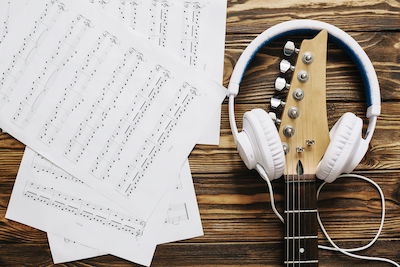
Being able to read sheet music is an amazing skill to master and is very much like learning a new language. But a language us as humans were all born to speak! Reading and writing music opens up so many magical doors and opportunities and has the ability to help you communicate with adults and babies alike! If you can read music you will have the ability to understand the overall structure of a composition and how the whole piece is put together. Why should you learn how to read western music?
Why should you learn how to read music?
Although it is possible to play music without actually reading the musical notation, there are some important reasons why you should spend time developing this all important skill.
- It allows you to develop more freedom and expression whether you play piano, keyboard, guitar or any other instrument for that matter! Having the ability to read music frees you up to focus on making what you are playing truly expressive!
- You will be able to play any piece of music. If you learn to read music then you will also have the ability to sight read music! In other words, play any piece of music you wish to play with ease!
- You will be able to play with other people as part of an ensemble or a band. Music notation and sheet music helps you to keep a group of musicians together!
- Learning how to read musical notation and also write musical notation allows you to share music with other musicians. Very much like writing a story.
How to read sheet music
Before you can read a whole piece of music in it’s entirety you need to first understand the different elements that hold the music together.
So the first and best place to start is to learn all the symbols of basic notation.
Music is made up of symbols, very much like a language. Here are some of the most common symbols you should be aware of:
The Stave
The stave is simply five horizontal lines one on top of the other. Where you place a note on these lines will tell you what note you will play – but more on this later!
These stave lines are used to help show us the musical alphabet. The musical alphabet consists of the letters A, B, C, D, E, F, G.
In order to understand the musical alphabet on the stave we need to give the lines a meaning. In order to do this, we need a clef. A clef helps to give each line of the stave meaning and helps us to label each line with note names. There are four main clefs, the treble clef, the bass clef, the alto clef and the tenor clef, but in this post we will look at two in particular. The treble clef and the bass clef!

Treble Clef
The treble clef, sometimes called the G clef, is used for notes with a higher pitch. A pitch above middle C to be specific.
The treble clef is sometimes called the G clef because the line where we start drawing the clef is always the note ‘G’.
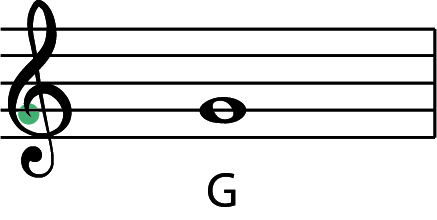
But there are ways to make it easier to understand these treble clef notes. And this is by using a mnemonic !
For the five lines on the treble clef you can use – Every Good Boy Deserves Football.
For the four spaces on the treble clef we simply say – FACE in the space

Bass Clef
The bass clef, sometimes called the F clef, is the next most common. The bass clef is mostly used for instruments that play low notes. Specifically, note that’s are below middle C.
The bass clef is sometimes called the F clef, because in between the dots on the line is always the note F!
Again, it is useful to use the handy mnemonic:
For the five lines: Good Bikes Don’t Fall Apart
For the four spaces: All Cows Eat Grass
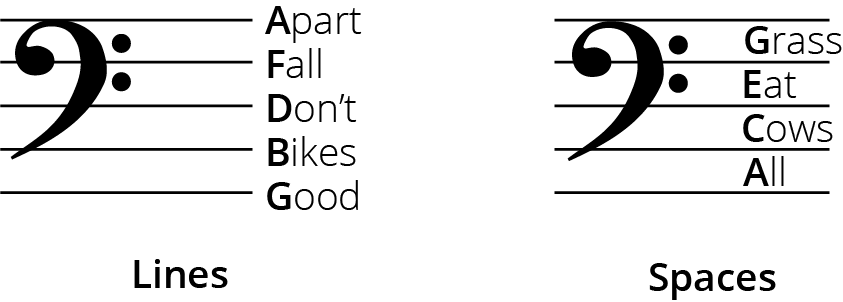
These mnemonics are a great way to help you remember the note names. To learn more about clefs then be sure to click here!
Now you know what the different lines and spaces on the stave mean we now need to know what to put on these lines and spaces. This is where need to really start learning about musical notation.
Music Notation
We will use the word musical notation to refer to the symbols we place on the stave. These symbols are what we call notes. The notes have lots of different meanings, they can tell you what letter name to play and also can indicate for how long you should play for!
Each note consists of a note head, a tail and sometimes a flag.
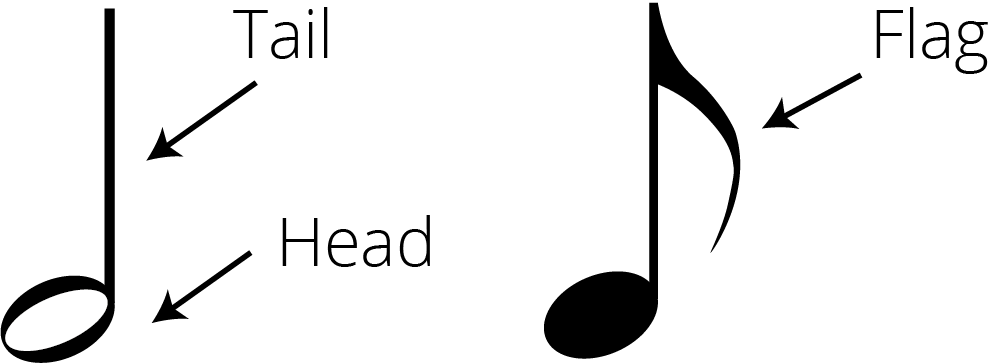
These note heads can be placed on any line or space to represent which note to play.
But these notes also have another important job and that is to represent how long each note/how many beats each note should be played. These differing note values are represented in certain ways:
Coloured in note heads with a stem are called crotchets or a quarter notes. This crotchet/quarter note is played for one beat!
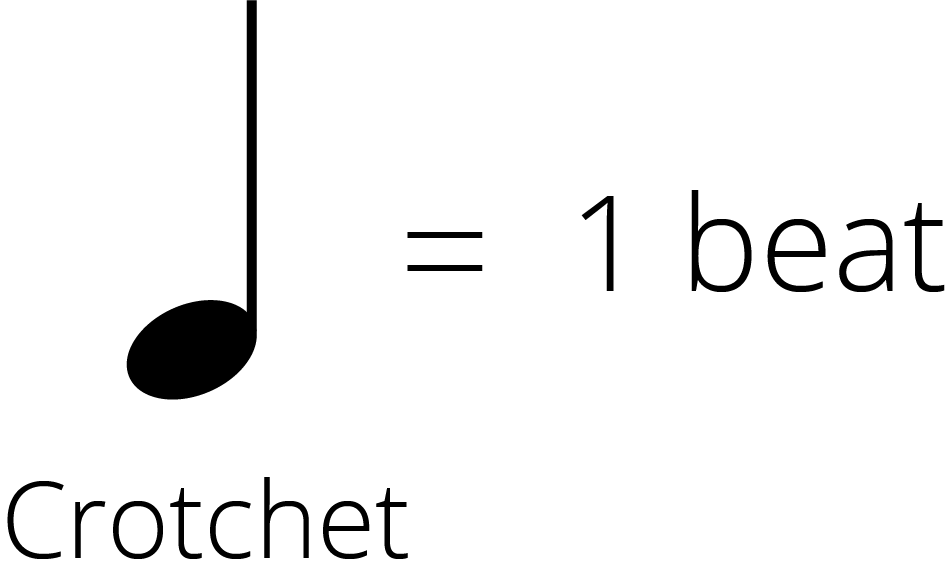
Open note heads with a stem are called a minims or half notes. This minim/half note are played for two beats!
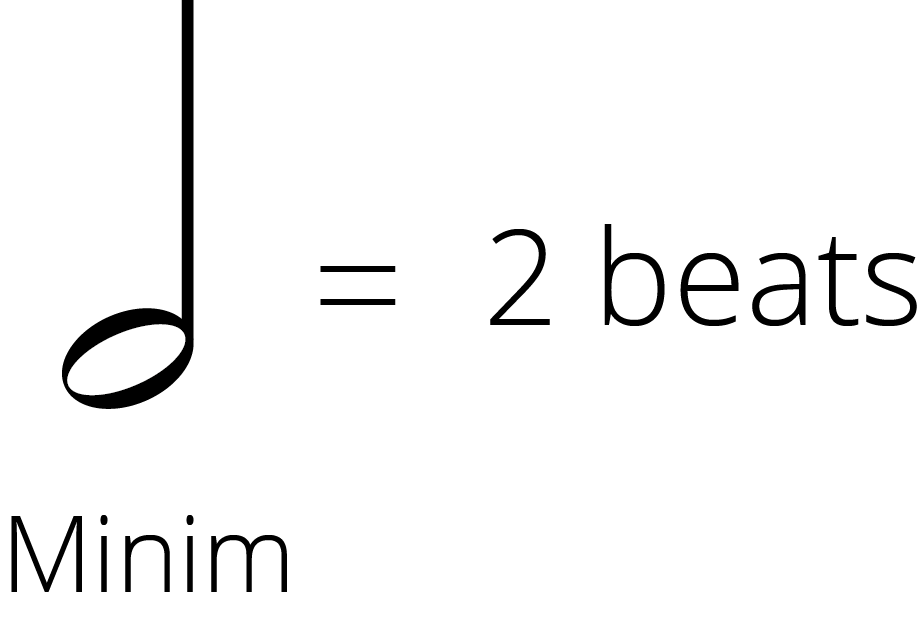
A colored in note head with a stem and a flag is called a quaver or an eighth note – this note’s duration is for half a beat. These quavers or eighth notes can also have their flags joined together to make them easier to read.


And finally we will look at a note which is simply an open note head without any stem or flag. This note is called a semibreve or whole note. The note value of this is four beats!

There are more note lengths but these are the basic few and the first ones you should learn how to read.
The next step is how do we make this now make sense on the stave. In order to make this easier to read we need to give it some kind of order. To do this we need to introduce something called a time signature. A time signature helps us to divide up our music equally to make it easier when you are reading music.
The top number in a time signature tells you how many beats and the bottom number will tell you what type of beat to count in. The time signature below is four, four time. This means there are four crotchet beats in each bar. More on time signatures here.

To help show this throughout the piece you need to make sure to include something called a bar line.

Here are some common time signatures to get you started.
4/4 – this simply means 4 crotchets or quarter notes in a bar
3/4 – this simply means 3 crotchets or quarter notes in bar
2/4 – this simply means 2 crotchets or quarter notes in a bar
2/2 – this simply means 2 minims or half notes in a bar
3/2 – this simply means 3 minims or half notes in a bar
4/2 – this simply means 4 minims or half notes in a bar
3/8 – this simply means 3 quavers or eighth notes in bar
These are some of the most common time signatures and are a great place to start but if you would like to learn more about time signatures then make sure to click here!
But how Fast do I play?
In order to know how fast you play your music you will need to look at the top left hand side of your sheet music. Here there will be a mark that tells you either an exact metronome mark or it may give you a performance direction.
If you have a metronome mark, this may read something like crotchet = 60. This simply means 60 crotchet beats per minute – exactly as fast as the second hand on a clock.
Otherwise you may see words such as:
Allegro – this simply means fast and lively
Largo – this simply means slow
These are all the basic elements of music but it is also useful to know some common patterns. Perhaps the most common patterns are the scales.
Music Scales
Having an understanding of music scales makes reading and understanding music much easier as they provide another pattern to help you to read music.
Scales provide regular patterns for our musical alphabet. The best way to understand the scales in detail is by knowing the circle of fifths!
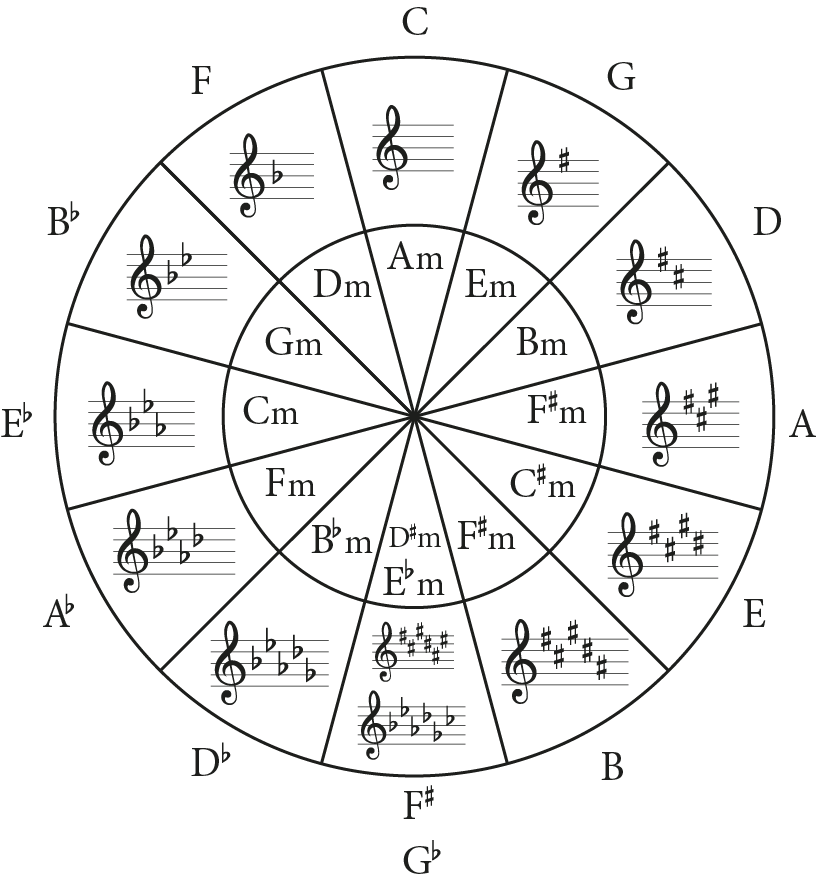
The circle of fifths is a nice clear diagram that shows all major scales and all minor scales. It helps you to understand what notes are in these scales as it provides the starting note and the key signatures. A key signature tells you what sharps and flats you need to play. Sharps and flats are symbols that indicate whether you need to raise the note by a semitone (half step) or lower it by a semitone (half step).

Major scales and minor scales have different combinations of these sharps and flats. However, no scale will have both sharps and flats. Every scale also has a very specific order of tones and semitones (whole steps and half steps).
By understanding these patterns learning to read sheet music will be much easier!
Let’s look at the C major scale. As you can see on the circle of fifths above there are no sharps and flats in the key signature of this scale. This simply means you can play the musical alphabet but starting on the C note!
The notes for this would be C, D, E, F, G, A, B, C!
This does have a specific tone/semitone (whole step/half step) pattern.
Tone, Tone, Semitone, Tone, Tone, Tone, Semitone
Recognizing your key signatures and having a clear understanding of the above pattern helps you hugely when learning how to read music!
Putting it All together
Now we have looked at many of the elements that hold the music together let’s see if we can use this to help us read music.
Let’s take a look at the short piece of piano sheet music below. Piano sheet music uses both the treble clef and the bass clef as the notes range from below middle C to above middle C, so this is a great place to explore written music.
Once you know what clef you are looking at, it is then important to look for the time signature and the key signature. Remember, these two elements will indicate how you will count but also what key/scale you will play in.
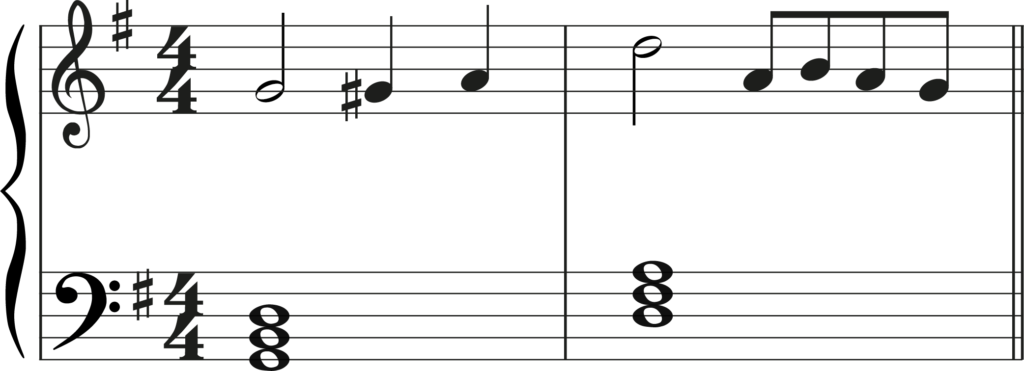
As you can see this piece has one sharp, indicating that you will be in the key of G major.
What is the first note in the piece?
The first note in the treble clef is on the second line of the stave. What note is on the second line? Remember our rhyme? Every Good Boy Deserves Football!
The second line is the note G!
What about the second and third notes?
The second note is also on the second line, but this time there is a sharp sign written next to it. This means that this note is only a half step above the G, meaning it is a G#. On the piano this would be played on the black keys.
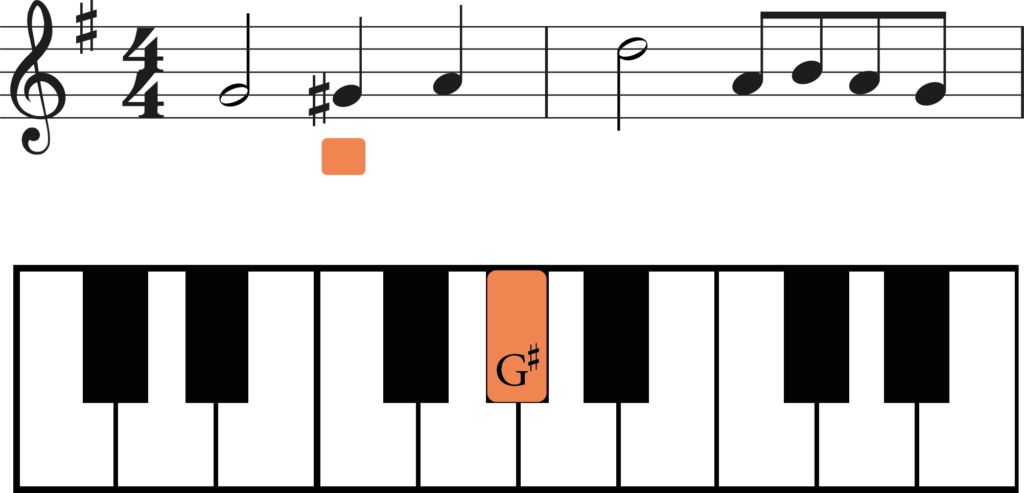
And what is the third note? The note is in the space above this. This is one note above the G, making it an A! You can also use our rhyme FACE in the space!
Now we can look at the note values for these three notes. The first note has an open note head with a stem, making this a half note or a minim. We will play this for two beats! The second note has a colored in head, and a stem, making this a crotchet/quarter note. The third note is the same as the second note
Using all of this information you can now simply play these three notes on the piano keyboard!
Want to Learn more?
Now you know the basics of how to read music, check out some of our free note naming worksheets to practise!

I’m looking for easy material for my son, and thought this is great! Except the Every Good Boy Deserves Football bit has been written top-down instead of bottom-up!
Thank you so much for bringing this to my attention! All corrected! So glad our posts help you, do make sure to check out our sister website http://www.musictheoryfoundations.com as well!
Jade